Written by R. Ann Parris on The Prepper Journal.
Editors Note: Another article from R. Ann Parris to The Prepper Journal. As always, if you have information for Preppers that you would like to share and be entered into the Prepper Writing Contest with a chance to win one of three Amazon Gift Cards with the top prize being a $300 card to purchase your own prepping supplies!
As I make this list, I’m weighing several things. One is the wildly different climates in Sydney, Savannah, Saskatoon, Santa Fe, Scarborough, and Seattle. General health, needs, yields (and yield types), and multi-functionality weigh heavily. Ease/difficulty in storage processing is also a factor, as is difficulty in propagation or seed saving for future years.
I’m also considering the stages of preparedness, experience, and growing capabilities.
These work for ‘burbs and acreage. They also work for small dooryard gardens, 8×8’ community-garden plots, balconies, and in some cases windowsills. While small-scale growers may not be able to get significant yields of some, there are sometimes side uses or the ability to establish baselines and expand seed stock.
I might amend this list a bit if we were solely looking at production spaces in excess of 500 square feet (that’s only a dozen 4×10’-4×12’ beds or a 20×25’ plot), but it really wouldn’t change much.

But No Elephants
What you won’t see are maybe the most-popular and most-recommended annuals and perennials in the English-reading world: Tomatoes, apples, and plums.
Water needs, timing of water, weather sensitivity, voracious appetites (especially the competition for calcium), timing of fertilizer, disease harboring and susceptibility, and the number of other critters that like tomatoes drop them off my list. There’s some pains in canning (mess, time) and in seed saving, but mostly it’s their neediness.
*Granted: Some tomatoes can work even in hanging pots by windows and they can be wildly productive.
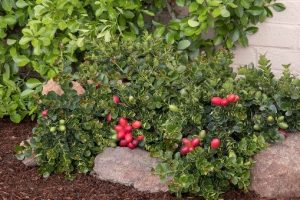
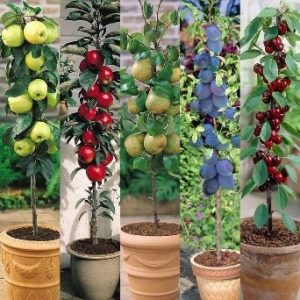

Apples and plums drop off mostly due to health, pests, pollination, and annual yield potentials for their square- and cubic-footage. There are high loss risks of any single-harvest plant, which also reduces their value in this context.
Super-dwarf fruits increase options for space-starved growers, and I’m a huge fan (http://www.theprepperjournal.com/2016/08/13/planning-your-homestead-orchard-benefits-of-dwarf-trees/), but there’s still limitations. If I was super space-crunched and had to choose between a mini-apple, bush nectarine, or gooseberry, and a happy, healthy rose, I’d actually keep the rose (leaves, hips, petals, thorny prunings, long flowering season).

The elephant eventually came through for Grandma Tildy, but not before it had consumed vast quantities and created enormous disruption. If we’re in a suitable location and have supplies for an elephant, go for it. If not, aim for less-needy and more-productive options.
*Jerry Smith’s book is absolutely adorable and totally worth re-reading and stocking for our children/grands. We can also apply it to our lives, and not just the number of elephants we can find in prepping, each with Elephant’s drawbacks and the possibility of Elephant’s big save. It’s full of other lessons, for both life and preparedness.


Strawberries
Have ya ever noticed how often strawberries pop up in suggestions, whether we’re talking about companion planting, stacking functions, expanding harvest seasons, easy starters, multi-purpose crops, homestead profit crops, or compact indoor and outdoor container gardening?
There’s reasons for that. Lots of them. Chances are pretty good you’ll need slug deterrents and you may need deer and-or bird exclusions, but they’re pretty hardy little things. They’re fast, easy, and not overly needy – to grow, and to propagate. They offer enormous harvests for their biomass and their footprint.


Varieties exist for many climates. They can handle anywhere from 6-10 hours of direct light. They’re suited for pretty much every single type of growing – good ol’ dirt in big beds or small hanging or stacked vertical containers, or any of the water- or mist-based methods.
They’re also easy to pick and clean, and they sun- and air-dry well, even in some of the more humid environments. They freeze and can pretty well, too, and they mix well with other fruits, both in foods and in the garden. Their leaves, too, are handy, with medicinal uses for us and our animals.
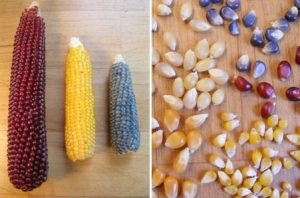

Popcorn
Corn comes in a variety of types. I’m specifically recommending popcorn as the for-anybody self-reliance option. Most aren’t great for sweet corn, roasting, or hominy, although you can do it. However, it does offer some versatility along with ease and hardiness.
Popcorn’s a little less-needy than modern field grain corns, whether they’re heirlooms or newer OP’s. It can be grown in compact, high-yielding Three Sisters, Elder or Iroquois mounds – alongside other self-sufficiency top crops. Hand pollinating small-stand corn is fast and simple.
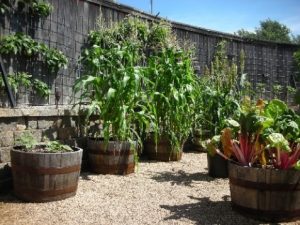
Storage is as easy as draping it in banners along the ceiling in homes or sheds, or piling it in a crib. We can wait to take it off the cob, and decide later if we want to pop it or grind it for ash cakes, polenta, or grits. We can also sprout it for salad greens or livestock feed. Cracked and soaked, it’s also fine for animal feeds.
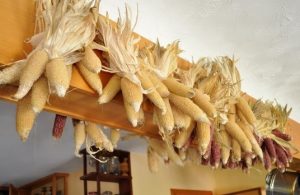

*Soak corn in slake water to improve nutrient availability.
Some varieties bear in short-enough time for even North Dakota to stagger plantings by a couple weeks. Some can handle arid Utah mountains. Others thrive in steam bath-summer regions. Some of the bigger, longer-growing varieties can out-yield anything but Big Ag hybrids.
Gourdseed (Iroquois “tooth”) corns http://www.southernexposure.com/corn-gourdseed-corn-c-3_18_73.html, http://www.history.org/Almanack/life/trades/traderural_corn.cfm would be in the running for their disease and clay-soil resistance, yield, and easy hulling, but they’re jumbo-giants that take 120-140 days.
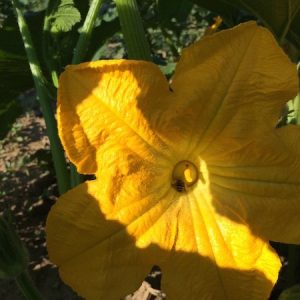

Squash
*Sidebar: Don’t bother the adorable little bees curled up napping in your squash flowers. Those are squash bees – https://content.ces.ncsu.edu/squash-bees-in-the-home-garden. They’re hella useful and they’re becoming an endangered species. Avoid sprays and powders, and try to leave your squash beds/containers undisturbed after frosts.
If you’re space crunched, I’m talking about a compact summer squash. If you have elbow room, I’m talking about autumn and winter squashes and pumpkins.
We may be able to squeeze sprawling/vining squash into more designs by trellising them (tie fruit to the trellis directly), angling them to shade heat-tender lettuces and root veggies, or using Three Sisters companion mounds.
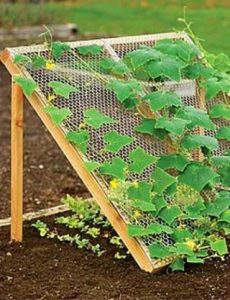
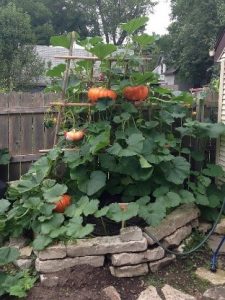

Both types are heavy feeders and susceptible to two crop-wrecking pests: vine borer and squash bugs. Both air dry well, summer types faster than dense storage squashes.
Summer Squashes are also easier to chop into, have a whole host of uses, from noodles to chips, filled “boats”, grilled spears, and cooked casseroles.
Storage squashes have that storage bonus due to their tough skins, though – long shelf lives as-is – but they’re also larger, take far longer, and regularly produce fewer total pounds.

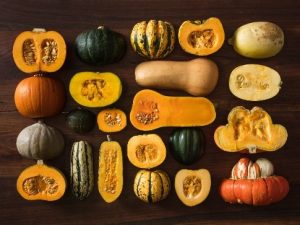
That extended growth makes them more vulnerable to pests, to not finishing, and to heat conditions leading to only male flowers – creating delays in fertilized flowers and in extreme cases, no yield at all.
Summer squash can start producing in 45-60 days and fill a laundry basket if picked early and often. They’re lower-calorie than autumn squash, but it’s not a huge difference. They don’t sit out as long, but we’re not talking cut lettuce here – you have a few days.

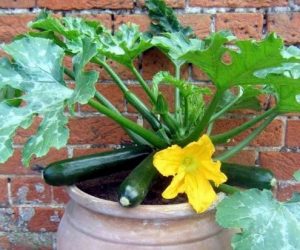
We will have to let summer squashes (and cucumbers) mature fully to collect seeds. Squash seeds are pretty hardy and will last 4-6+ years in paper on a shelf, so if you’re starting with 20-30 and only planting 2-5 … you’ve got years before you have to let a couple mature or worry about netting and then hand pollinating seed stock (they’re promiscuous and will hybridize in a heartbeat).
*Heads up: Cut and scoop seeds for saving before autumn squash are cooked.
The edible seeds are one of the things that make mature squashes and pumpkins incredibly valuable self-sufficiency crops. The center pulp, too – it’s a rich boost for livestock.

Potatoes, Yams & Sweets
First off, sweet potatoes aren’t yams. They’re in the Ipomoea family with morning glories. Irish potatoes are tomato cousins (Solanum; nightshades). Yams are barky-skinned Dioscorea.
*Oca, taro, and konjac all try to steal the yam name, too. If growing one of those is an option, consider them listed here, too.
There are locations where potatoes are going to do far better than a tropical tuber, root, or corm. Even they may require soil-warming dark groundcovers and plastic row covers. Likewise, not all of us live somewhere that makes growing and storing potatoes viable should we end up in self-reliance conditions. For us, there’s yams, sweets, and those “exotic” alternatives.
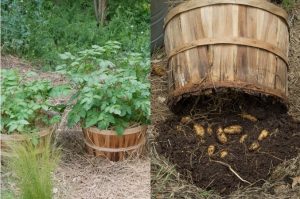

All of them are calorie staples. True yams are closer to Irish potatoes than they are sweets – both are starchier, yielding higher calories per area and pound (160-230 per cubed cup). For a veggie, though, sweet potatoes aren’t bad – 110-180 calories per cubed cup.
Comparatively, per cup it’s 40-70 for winter squashes, 280+ for raw squash and pumpkin seeds, 600-780 for dried or roasted seeds, and 125-140 for sweet corn and green peas.
The foreign and less-recognizable domestic root/tuber crops have an added bonus: Neighbors may not even realize we’re producing food – compared to more recognizable corn, squashes and berries. Some, like sweets, also offer edible leafy greens, for us and our livestock.
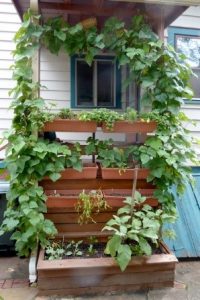

High-Yielding Multi-Use Pole Beans
Those adjectives were deliberate, although I’m not putting beans here for the usual starchy-protein reason. For small space growers, especially, it’s the ability to get so many veggies out of such a small footprint.
It takes a lot of pods to get enough dry beans for a meal or a family, see. However, it only takes a handful of plants to produce enough green beans for a meal at a time. That makes it a very effective small-space crop.


With 20-50 instead, we can be harvesting pints and quarts a day, and still net ourselves a full gallon+ of dry beans.
Like squash, we can arrange them to shade heat-sensitive crops, but with some hooks and cord, they can also be shading our porches and windows. They increase soil fertility, and are incredibly easy to save seed from, and we can continue harvesting from the same plant while it’s making that seed.
Beans themselves need some fertility to start with, but they’re not overly hungry or thirsty crops, which adds to their ease and effectiveness, small containers to larger lands.

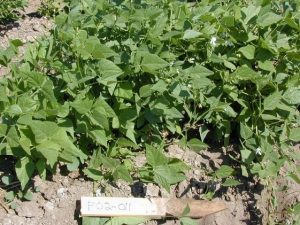
To lessen irrigation further, consider the historic tepary bean – if you can keep their soil dry enough, anyway https://www.npr.org/sections/thesalt/2018/02/21/586420523/arizonas-tepary-beans-preserve-a-native-past-hold-promise-for-the-future. (Here’s a variety that’s a little easier for typical garden moisture https://www.adaptiveseeds.com/product/vegetables/beans/tepary-bean-sacaton-brown-organic/).

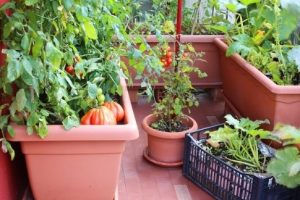
Self-Reliance Crops
These are my top picks for sufficiency-increasing yielders, small space or large. There are plenty of others.
Peas can yield incremental amounts, or hugely – their new sprouts and tips for spinach-like greens, tender flat pods for stir fry and salad, plump English peas, or matured into the starchy staple they were in Europe to boost our calorie production.
Small yards are plenty big enough for the space-efficient fruit tree options, especially espalier or columnar, and trellised vines, and they’re plenty big enough to keep a 2-4’x10-20’ band of wheat or quinoa/amaranth as a “decorative” border to continually renew seed sources.


Wild and domestic salad greens didn’t make the list due to pests and being calorie-null, but if we’re only augmenting stored staples, they and herbs have a lot to offer us and livestock, and can be grown as many ways and places as strawberries. Fast-turn beets, turnips, and radishes are also useful in that scenario.
Mostly, our top-pick crops come down to individual situations. The handful highlighted here have a lot to offer everybody, at any experience or growing space, but it’s just a starting point.
Follow The Prepper Journal on Facebook!
The post Self-Sufficiency Superstars – Top Crops for Any Growers appeared first on The Prepper Journal.
from The Prepper Journal
Don't forget to visit the store and pick up some gear at The COR Outfitters. How prepared are you for emergencies?
#SurvivalFirestarter #SurvivalBugOutBackpack #PrepperSurvivalPack #SHTFGear #SHTFBag

No comments:
Post a Comment